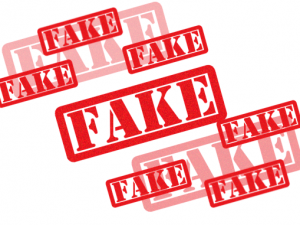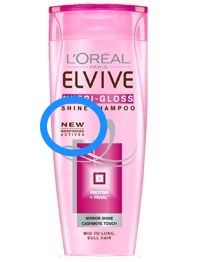Pretty much everyone has an opinion on what is a brand. But, as the saying goes, it’s like teenagers and great sex: lots of talk, little action. When it comes to actions, many executive teams are killing their brand with fake brand building concepts. And the worst of it is that they may not even be aware.
9 Fake Brand Building Techniques
 Fake reviews – The sharing economy depends on reviews. Ecommerce and online trust are underpinned by peer reviews. Some companies prefer to game the system and mask their poor performance. An even more treacherous activity is buying good reviews, through a site like Fiverr. Amazon announced this week that it would crack down on people offering these fake reviews. (BBC report)
Fake reviews – The sharing economy depends on reviews. Ecommerce and online trust are underpinned by peer reviews. Some companies prefer to game the system and mask their poor performance. An even more treacherous activity is buying good reviews, through a site like Fiverr. Amazon announced this week that it would crack down on people offering these fake reviews. (BBC report)- Fake customer service – Sometimes, you do come across organizations that actually believe that the customer is always right. Zappos, Amazon, First Direct and Chick-Fil-A have all carved out their place based on a resoundingly solid customer service experience. Others, however, such as Comcast in the US or BT, Scottish Power or NPower in the UK, have steadfastly refused to put the customer at the center, and continue to provide a subpar customer service. With low-cost airlines such as Ryan Air and EasyJet, you would possibly expect a dismal poor service; but, Southwest Airlines and JetBlue consistently buck that trend. And you would hope that the premium airlines to do much better. But, that’s not the case. British Airways demonstrated to me earlier this year — when they downgraded me — how their customer service was besotted in process and procedures that meant no sense to me as a customer. In today’s world, having an automated answering service telling us that “your call is important to us” and making you wait endlessly is no longer appropriate.
 Fake customer loyalty programs – Some companies try to get away with customer loyalty programs that are reduced to an exchange of more or less meaningless points. In reality, for all intents and purposes, these loyalty cards are just a way to corner and capture customers’ data. With these schemes, customers accumulate points that don’t convert into a perceptible value. Over time, these are bound to be penalized. In the UK, Tesco’s Clubcard and the Nectar Card have both registered sinking profitability. Tesco had to decrease the value of the points earlier this year to make its card even less meaningful. (For more details, read this “This Is Money” article)
Fake customer loyalty programs – Some companies try to get away with customer loyalty programs that are reduced to an exchange of more or less meaningless points. In reality, for all intents and purposes, these loyalty cards are just a way to corner and capture customers’ data. With these schemes, customers accumulate points that don’t convert into a perceptible value. Over time, these are bound to be penalized. In the UK, Tesco’s Clubcard and the Nectar Card have both registered sinking profitability. Tesco had to decrease the value of the points earlier this year to make its card even less meaningful. (For more details, read this “This Is Money” article)- Fake voice – From fake blogs to executives who have their handles managed by third parties (without disclosure), it is hard to present a viable brand when the voice is “bought” or borrowed. Walmart famously found out the cost of paying for a fake blog (see The Guardian’s coverage at the time). Similarly, there was Sony’s PSP poor effort. Most of the bad examples date back, but that has not stopped brands from trying unsavoury tactics. I would put hiring celebrity spokespeople as one of the most obviously wrong ways to develop an authentic brand voice.
- Fake promises – Airlines have, for many years, advertised cheap flights based on a ludicrously few available number of seats. Many insurance forms come with reams of small print that explains how they will be able to wiggle out of compensating the insured party. Cosmetic beauty products promise a % reduction in wrinkles based on lab results that can never be reproduced at home.
- Fake pricing – There are many forms of deceitful pricing. The list of unethical or questionable techniques is long. For example, when using certain online travel agencies, they might show one price at booking, but by the time you get to the final checkout, the price is somehow higher. You can find example in stores all the time, too. Below was a recent price gouge that is rather subtle. At Waitrose, they sell 30 dishwasher tablets at a price of £5.84/kg, yet when you buy a bigger box (45 tablets) the price goes up to £5.89/kg. Hardly what one would call economies of scale.

If you buy more, the price per unit… goes up?
The issue of fake or inconsistent pricing gets more complicated with online versus offline pricing, as I experienced here at House of Frasers.
- Fake leadership – Great leaders are a truly rare breed. Each heroic leader may be some form of unicorn, completely impossible to replicate. Poor leaders, meanwhile, who don’t lead by example or whose authenticity is questionable are, unfortunately, legion. Fake leadership comes with that plastic smile and false camaraderie. It’s a form of leadership that prefers to be surrounded by like-minded individuals and/or prefers to control and step on his reports, rather than encourage diversity and growth.
 Fake R&D – This can take several forms. At the most superficial level, it can be the investment in R&D just to be able to slap NEW on top of the latest product in order to get a new listing. It can also be in the form of R&D that is focused solely on stuffing the war chest with patents. Then there is the R&D that is plain wrong. Volkswagen knows a thing or two about that one with its emission scandal.
Fake R&D – This can take several forms. At the most superficial level, it can be the investment in R&D just to be able to slap NEW on top of the latest product in order to get a new listing. It can also be in the form of R&D that is focused solely on stuffing the war chest with patents. Then there is the R&D that is plain wrong. Volkswagen knows a thing or two about that one with its emission scandal.- Fake products – As brands grow in popularity, so does the risk of finding counterfeit products. This becomes an ever bigger risk as the delta between cost and “value” (i.e. price sold) widens.
 Counterfeits are a bona fide plague on brands. In demonstration of the noxious component of fakes, the US Trade Representative authorities are threatening to blacklist Alibaba for not doing enough to fight counterfeit sales on its site. [WSJ Article] Ultimately, however, the onus lies on the brand to protect its turf. [Image credit for Black Labial from Scoop Hoop]
Counterfeits are a bona fide plague on brands. In demonstration of the noxious component of fakes, the US Trade Representative authorities are threatening to blacklist Alibaba for not doing enough to fight counterfeit sales on its site. [WSJ Article] Ultimately, however, the onus lies on the brand to protect its turf. [Image credit for Black Labial from Scoop Hoop]
The era of fake brand building is coming to a rude ending based on the ever greater transparency. Brands must be extremely vigilant to stay away from “quick” schemes that may create a buck today, but lose the plot tomorrow. For that, brands also need to do a reality check and know better who they are, themselves. If you don’t have a firm and shared vision of who you are, it’s hard not to sound fake.
Your comments and reactions?

 Fake reviews – The sharing economy depends on
Fake reviews – The sharing economy depends on  Fake customer loyalty programs – Some companies try to get away with customer loyalty programs that are reduced to an exchange of more or less meaningless points. In reality, for all intents and purposes, these loyalty cards are just a way to corner and capture customers’ data. With these schemes, customers accumulate points that don’t convert into a perceptible value. Over time, these are bound to be penalized. In the UK, Tesco’s Clubcard and the Nectar Card have both registered sinking profitability. Tesco had to decrease the value of the points earlier this year to make its card even less meaningful. (For more details, read this
Fake customer loyalty programs – Some companies try to get away with customer loyalty programs that are reduced to an exchange of more or less meaningless points. In reality, for all intents and purposes, these loyalty cards are just a way to corner and capture customers’ data. With these schemes, customers accumulate points that don’t convert into a perceptible value. Over time, these are bound to be penalized. In the UK, Tesco’s Clubcard and the Nectar Card have both registered sinking profitability. Tesco had to decrease the value of the points earlier this year to make its card even less meaningful. (For more details, read this 
 Fake R&D – This can take several forms. At the most superficial level, it can be the investment in R&D just to be able to slap
Fake R&D – This can take several forms. At the most superficial level, it can be the investment in R&D just to be able to slap  Counterfeits are a bona fide plague on brands. In demonstration of the noxious component of fakes, the US Trade Representative authorities are threatening to blacklist Alibaba for not doing enough to fight counterfeit sales on its site. [
Counterfeits are a bona fide plague on brands. In demonstration of the noxious component of fakes, the US Trade Representative authorities are threatening to blacklist Alibaba for not doing enough to fight counterfeit sales on its site. [








